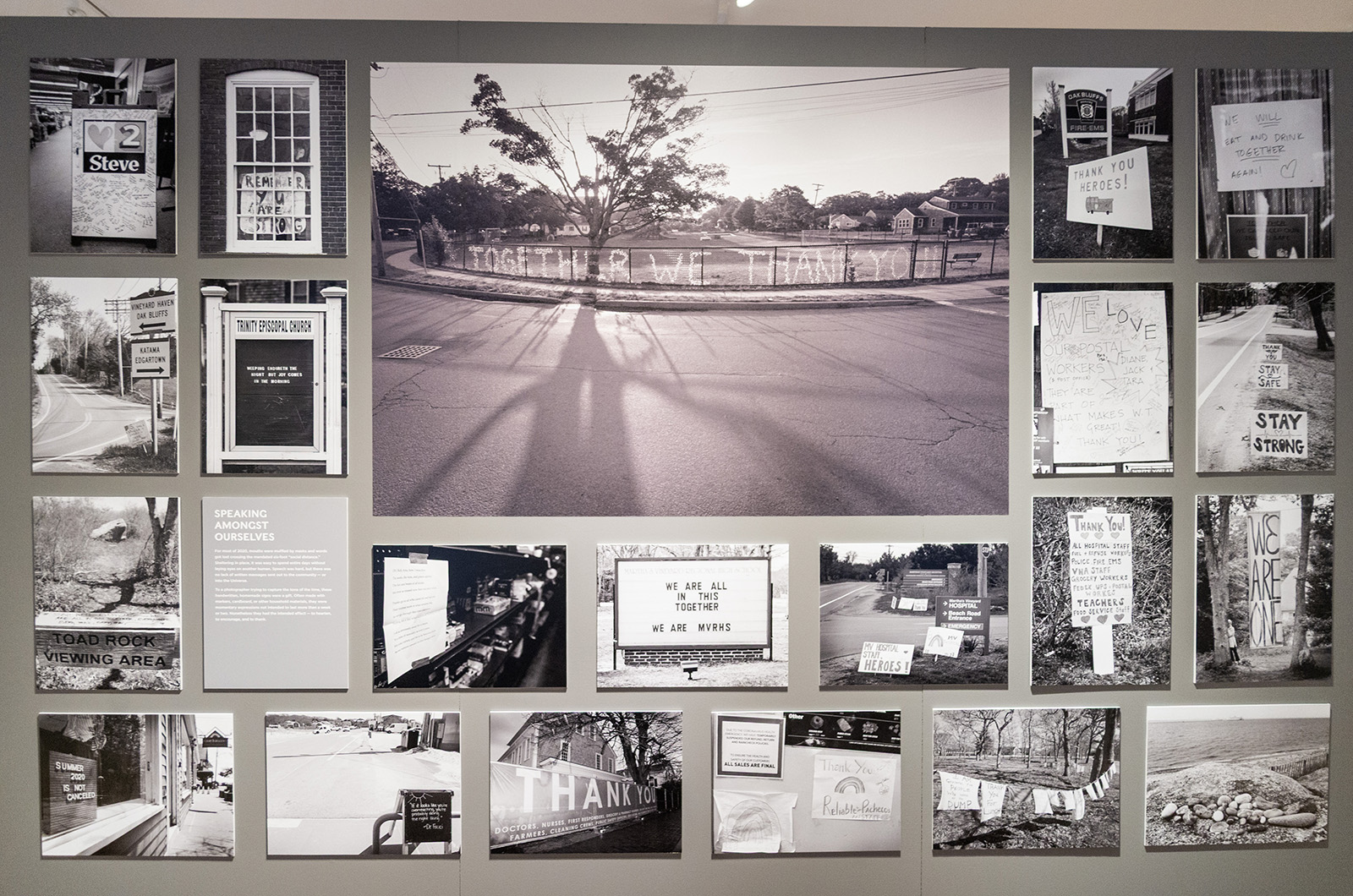Five years after the start of the Covid pandemic, the rise of the Black Lives Matter movement and the myriad other events that took place in 2020, Dan Waters is presenting a photographic time capsule of the year at the Martha’s Vineyard Museum.
The exhibit of black and white film photography is titled Stay Safe, Stand Strong: Martha’s Vineyard in 2020. It captures the headline events from 2020 as well as the granular aspects of life on the Island at the time. Photographs show yard signs celebrating high school graduations, haircuts on porches and messages promoting togetherness displayed in office and home windows.
“It did make me relive a lot of the events I photographed,” Mr. Waters told the Gazette. “A lot of it was pleasant, in a perverse way, because I got to interact with people....I came home feeling good about people. The thing we had to fear was the virus.”
Mr. Waters led a talk at the museum last week, talking about the inception of the exhibit, which opened on Jan. 25 and continues through May 4.
Mr. Waters said he began taking portraits after retiring from the museum, where he worked in the fundraising department. He also began capturing images of the Island’s architecture and downtowns, including the former Hinckley Lumber building, which was sold in 2018, and the replacement of the steeple on Tisbury town hall.
He told the crowd at the museum that he was inspired to record the Vineyard on film in part due to the advent of digital photography. The transition to digital has shifted much of the photographic record from physical files, such as negatives, to storage on phones and other devices. Mr. Waters said that many negatives that preserve history, like his own, are part of the archives because the physical material can survive in various ways.
“Today, almost all photographs are taken with digital technology. We don’t have shoe boxes for those,” he told the crowd. “If your phone ends up in a shoe-box, chances are nobody will know the password, the battery will be dead. Really, whatever photographs are on it will not survive the passage of time.”
Mr. Waters said the curatorial department at the museum introduced him to the organization’s large collection of photographs and negatives. On Wednesday, he showed some of the negatives from the collection that capture the minute details of the past, including what food was on sale in the 19th century.
Mr. Waters work continues this lineage. During his presentation he shared photographs of the inventory at local stores such as Chilmark Chocolates and Cronig’s. He spent three months recording the shelves and the shopping lists of customers at Cronig’s.
“Cronig’s Market and Reliable Market are two places that sell what we buy. They are not a chain,” he said. “They buy what we asked for...so the shelves at Cronig’s Market are a particular kind of story of our time.”
During the Covid pandemic, Mr. Waters took photographs of food distribution, of people making masks — anything he was invited to.
He said coming up with an organizational method for the exhibit had its own challenges. After going through different iterations that he felt did not work, he settled on dividing the exhibit into major themes.
“The Island was active in a way that I had never seen it active before,” Mr. Waters said. “It was a great pretext to really discuss things like current events and what does all of this mean, what can we learn from it five years later.”









Comments (2)
Comments
Comment policy »